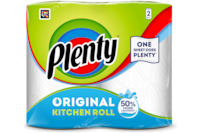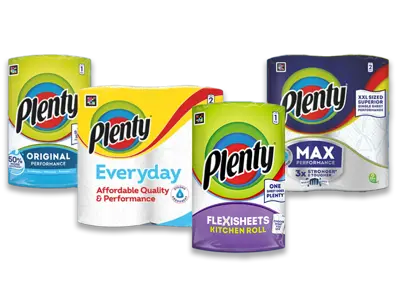140 people found this helpful
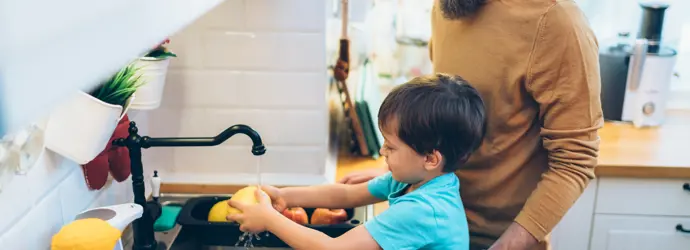
Kids love learning to cook – and you can’t learn without making a mess. Tossing pizza dough around. Picking the eggshell out the cake mix. Stopping them just as they’re about to sprinkle dog treats on top of the icing.
But as soon as they’re old enough to get flour up to their elbows, it’s time to start teaching basic food hygiene for kids. Here are 10 food hygiene rules for a fun, safe and hygienic kitchen.
1. Basic food hygiene 101: handwashing
Learning to wash hands before cooking is one of the most important food hygiene rules. Explain to them that, although there are good types of bacteria, there are some germs that can make your stomach start making certain noises. That’s why hands should be sparkling clean before handling food to make sure you all stay healthy.
Tip
Help kids understand the concept of germs by covering their hands in non-plastic glitter. Ask them to wash off all the glitter and explain to them that once all the glitter has gone, the germs have gone too.
2. Dress the part
Turn food hygiene for kids into a game of fancy dress by dressing up as a hygienic chef. Make sure your kids’ hair is tied back, their sleeves rolled up, all jewellery removed and that they are donning an apron like a pro. Adding a tall chef’s hat is optional, but encouraged.
3. Clean up afterwards
Once your child understands the concept of germs, it will be easier for them to understand why it’s important to wipe surfaces and clean up after cooking. Involve your child in the cleaning-up process and show them that basic food hygiene rules are fun by playing a game of ‘germ busters’. Work as a team to wipe up spillages with kitchen paper and conquer the germs with surface spray.
Tip
Keep an absorbent kitchen paper, such as Plenty Original, on hand for mopping up spillages as they happen. It’s perfect for the clean-up too, because it’s strong enough when wet for wringing, wiping and scrubbing.
4. Separate raw meat
Teach your child the difference between raw foods and cooked foods, and why one of the most important food hygiene rules is to keep them separate, especially when it comes to meat. Explain that this is because some raw meat contains harmful bacteria that can make you poorly if it contaminates the other food around it.
5. Use different chopping boards
Now that the kids understand the food hygiene rules around keeping raw meat separate, they’ll have no problem understanding why it’s important to use different chopping boards for different types of food. Invest in different coloured chopping boards to remind them: red for raw meat, blue for raw fish, yellow for cooked meat, brown for vegetables, green for fruit and salads and white for bread and dairy products.
6. Coughs and sneezes spread diseases
It’s important not to prepare food for a group if you or your child is very poorly or have a stomach bug, as you could spread germs to others through the food! But if your kid is at the end of a mild cold, it could be a good way to teach them about preparing food hygienically when they’re ill. Get them into the habit of catching sneezes with a tissue and washing hands immediately afterwards.
7. How to organise a fridge
Basic food hygiene in the fridge is important to avoid food contamination. Teach your child how to organise a fridge safely by asking them to draw a picture of vegetables, a picture of meat and a picture of dairy products like cheese or milk. Explain the differences between the types of food, and that raw meat goes on the bottom shelf, vegetables in the salad drawers and dairy products at the top. Stick the drawings in these positions on the front of the fridge to help them remember. Just make sure you don’t let slip where you keep your secret snacks hidden.
8. Don’t lick fingers
Licking fingers is one of those food hygiene rules that is all too tempting to break – even for mum and dad. If you’re baking a cake, encourage your child to use spoons for tasting the cake mix instead, and stop them from putting the spoon back into the mixture once they’ve licked it. Keep some Plenty Flexisheets to hand to wipe sticky fingers on, to help reduce the temptation of licking them.
9. Cooking food properly
This is a great time to teach your child about how cooking makes certain food safe to eat and how different recipes require different lengths of time to cook. A fun way to illustrate this is with a food thermometer – show them how the temperature rises, and at what temperature the food is safe to eat.
10. How to store food
Teach your child that different types of foods need to be kept at different temperatures. For example, lentils need to be stored in a cupboard, milk in the fridge and frozen vegetables in the freezer. Teaching food hygiene for kids is all about making it fun, so help them to decorate some jars for the dry food to be kept in.
Cooking is an important skill for all boys and girls to learn but making sure they understand basic food hygiene rules is just as crucial. Once they’ve mastered basic food hygiene for kids, you can enjoy their masterful creations with the peace of mind that they’re safe to eat. Next step: teach them how to make you breakfast in bed…
Now you've got your little chef trained in the art of kitchen hygiene, check out our guide on how to make recycling fun for kids, and they'll be recycling as well as cleaning up after themselves in no time!
Related articles
How to clean baking trays until they shine
Wish your dull, dirty baking tray could sparkle like new? Learn the best way to clean baking trays with just a little elbow grease in 7 easy steps.
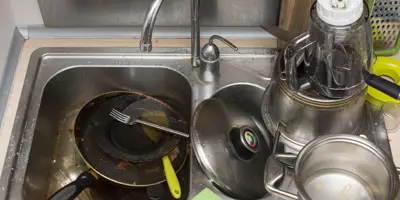
Learn how to clean the microwave with 3 easy methods
Discover the best ways to clean the microwave, including how to clean a microwave with lemon, vinegar, and how to get a clean microwave with baking soda.
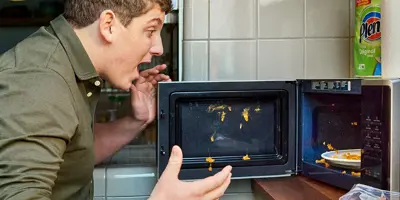
The 10 golden rules of kitchen hygiene
Find out how to keep on top of kitchen hygiene and reduce the risks posed by bacteria by learning these simple kitchen hygiene rules.
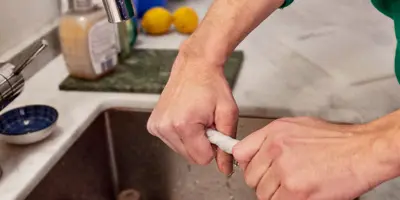
How to clean a deep fat fryer: 10 easy tips
Learn how to clean a deep fat fryer swiftly and safely! These 10 tips show you the best way to clean deep fat fryer interiors and exteriors.
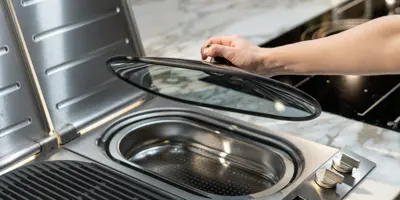
How to clean an oven after not cleaning it for a while
Looking for straight-forward oven cleaning tips? Read this simple step-by-step guide on the best way to clean an oven.
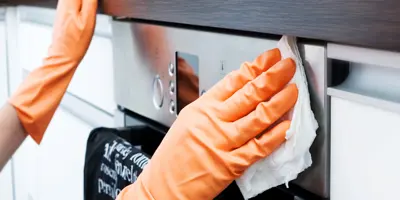
How to clean a fridge when you’re in a hurry
Our guide on how to clean a refrigerator until it’s spick-and-span, inside and out, in less than 30 minutes. Click here to take the challenge!


